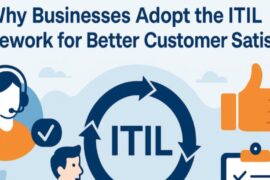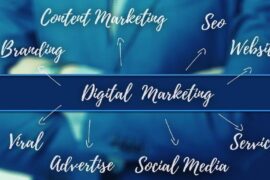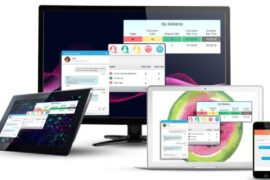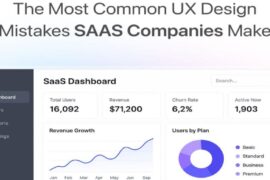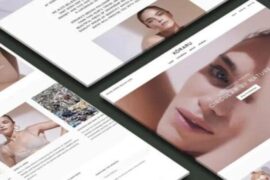Prototype testing is a significant step in the product development process. It involves evaluating a preliminary version of a product to gather valuable user feedback and identify areas that need improvement. This testing ensures that the product meets user expectations before it is finalised.
In the development lifecycle, prototype testing plays a key role in validating design concepts and ensuring functionality. Addressing usability issues early on helps create a product that aligns with user needs.
Types of prototype testing
Prototype testing is an essential step in design and development, allowing teams to refine ideas, gather feedback, and identify challenges before creating a final product.
Prototype testing varies depending on the design stage. From idea generation and UX design to interaction design and the development phase, different types of prototypes help teams refine concepts, gather feedback, and address challenges before creating a final product.
Here are the main types of prototype testing explained in detail:
#1 Paper prototyping
Involves simple, hand-drawn sketches to simulate user interfaces and workflows.
Purpose:
- Helps teams quickly visualise ideas and receive user feedback at the very beginning of the design process.
Benefits:
- Extremely cost-effective as no specialised tools or software are needed.
- Encourages collaborative brainstorming by allowing team members to contribute ideas freely.
- Easy to modify during discussions.
#2 Low-fidelity prototyping
Utilises basic designs like high-level wireframes or content models to represent the overall concept.
Purpose:
- Focuses on the structure and flow of the user experience without going into detailed design or aesthetics.
Benefits:
- Quick to create and adjust, saving time during the early design phase.
- Provides clarity on the main features and navigation flow.
- Helps teams gather early-stage feedback to address major issues before progressing.
#3 High-fidelity prototyping
Creates detailed and interactive prototypes that look and function much like the final product.
Purpose:
- Enables comprehensive testing of the design, including layout, visuals, and user interactions.
Benefits:
- Offers a realistic user experience, helping stakeholders and users better understand the final product.
- Allows for usability testing to identify areas for improvement.
- Useful for presenting polished designs to clients or decision-makers.
#4 Feasibility prototyping
Focuses on validating whether specific features, concepts, or technologies can be successfully implemented.
Purpose:
- Tests technical aspects to ensure the practicality of the proposed design.
Benefits:
- Reduces risks by identifying potential technical challenges early in the process.
- Saves time and resources by resolving feasibility issues before full-scale development begins.
- Helps determine the best solutions for technical problems.
#5 Live data prototyping
Uses real or simulated data to test how the prototype behaves in realistic conditions.
Purpose:
- Validates functionality and performance when interacting with live environments, making sure the prototype meets practical needs.
Benefits:
- Provides insights into how the design handles real-world scenarios.
- Identifies integration or data-handling issues that might not appear in static testing.
- Helps refine the prototype for smoother performance during actual use.
Each type of prototype testing plays a unique role in the development process, making sure the final product is functional, user-friendly, and technically feasible.
Benefits of prototype testing
Here are the key benefits of prototype testing:
#1 Early detection of issues
- Identify problems early: Prototype testing helps uncover design flaws and usability issues before full-scale development begins.
- Save time and resources: By addressing these problems early, teams can avoid costly changes later in the development process.
#2 Improved user satisfaction
- Incorporate user feedback: Testing with real users ensures that their needs and expectations are considered during the design phase.
- Create user-focused products: The feedback gathered helps refine the design, leading to a product that delivers a better experience.
#3 Cost efficiency
- Reduce expensive fixes: Catching issues during the prototype stage lowers the chance of expensive errors needing correction after the product is launched.
- Optimise resources: Resolving problems early makes sure that time, effort, and money are spent on refining the product rather than fixing avoidable mistakes.
#4 Stakeholder engagement
- Facilitate better communication: Prototypes provide a tangible model for stakeholders to review and understand the design.
- Achieve alignment: Having a clear visual representation helps make sure that everyone involved in the project is on the same page.
Best practices for effective prototype testing
To get the most out of prototype testing, it’s important to follow a structured approach. These best practices make sure that the testing process is thorough, efficient, and provides valuable insights:
#1 Define clear objectives
- Set specific goals: Clearly identify what you want to test, such as usability, functionality, or the visual design of the prototype.
- Stay focused: Having clear objectives ensures the testing process remains targeted and efficient.
#2 Select appropriate test participants
- Choose the right users: Recruit individuals who closely represent your target audience to provide meaningful and relevant feedback.
- Ensure diverse input: Include a variety of participants to uncover a wider range of potential issues and preferences.
#3 Choose the right prototyping method
- Match the method to the goals: Use low-fidelity prototypes like sketches for early feedback on structure and ideas or high-fidelity prototypes for detailed testing of design and functionality.
- Adapt to the stage of development: Select a method that aligns with where the project currently stands in its development process.
#4 Iterative testing and refinement
- Test multiple times: Conduct several rounds of testing, using each to improve and refine the prototype based on feedback.
- Progressively enhance: Each iteration should address identified issues and move closer to the final design.
#5 Document findings thoroughly
- Keep detailed records: Write down observations of user behaviour, feedback, and any problems discovered during testing.
- Inform future decisions: Use this documentation to guide the next stages of development and avoid repeating issues.
In conclusion
Prototype testing plays a vital role in creating successful, user-centred products. This process makes sure that the final product is functional, intuitive, and enjoyable for its audience.
Integrating prototype testing into the development process helps save time, improve the overall quality of the product and reduce costs.
It’s an essential step for any team aiming to deliver exceptional results. By prioritising this practice, you can build products that resonate with users.






